Concluding China SST with travel

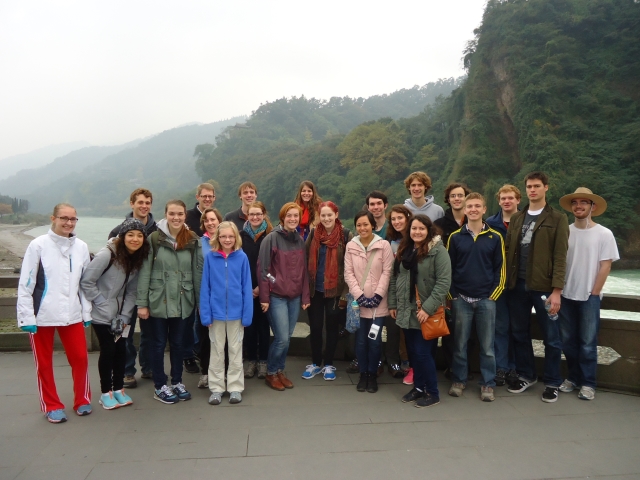


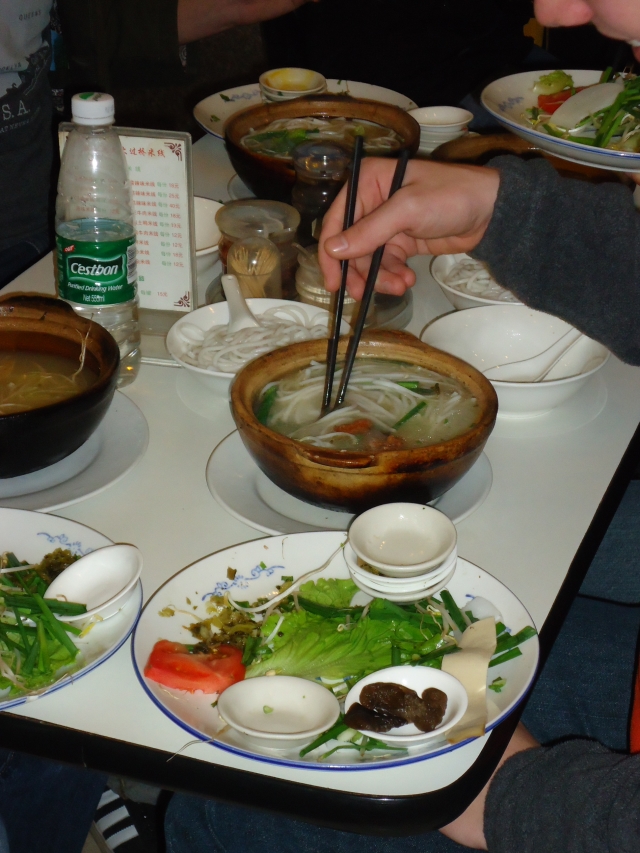
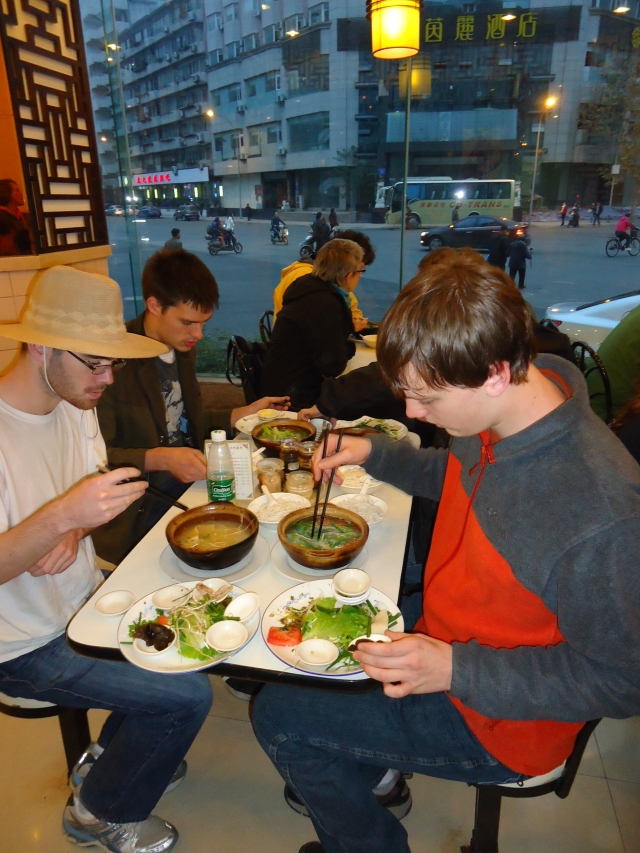
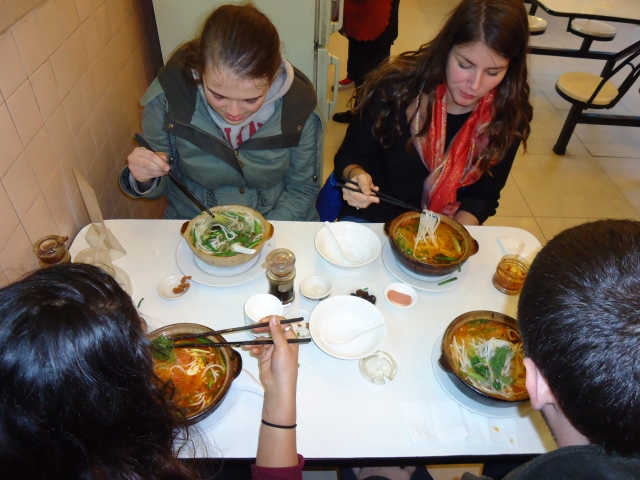
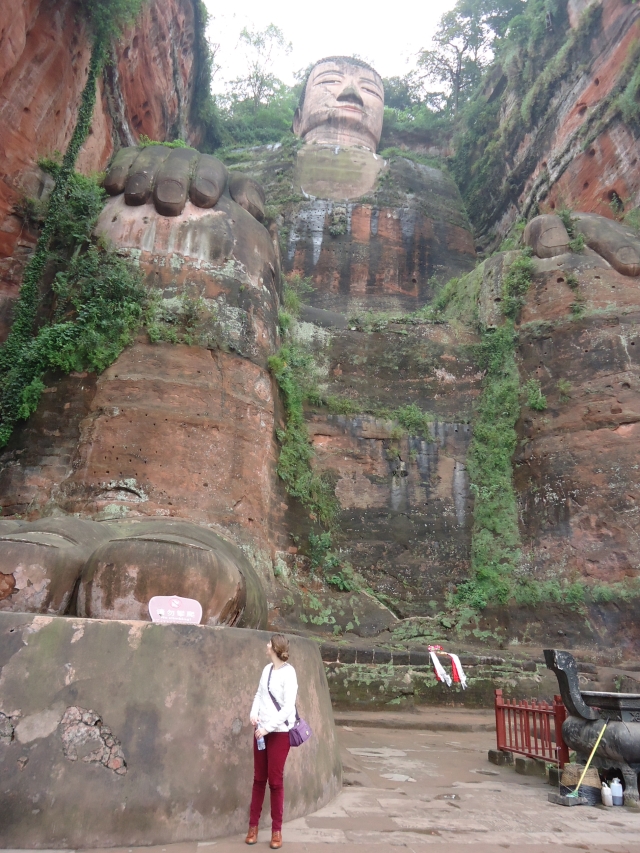
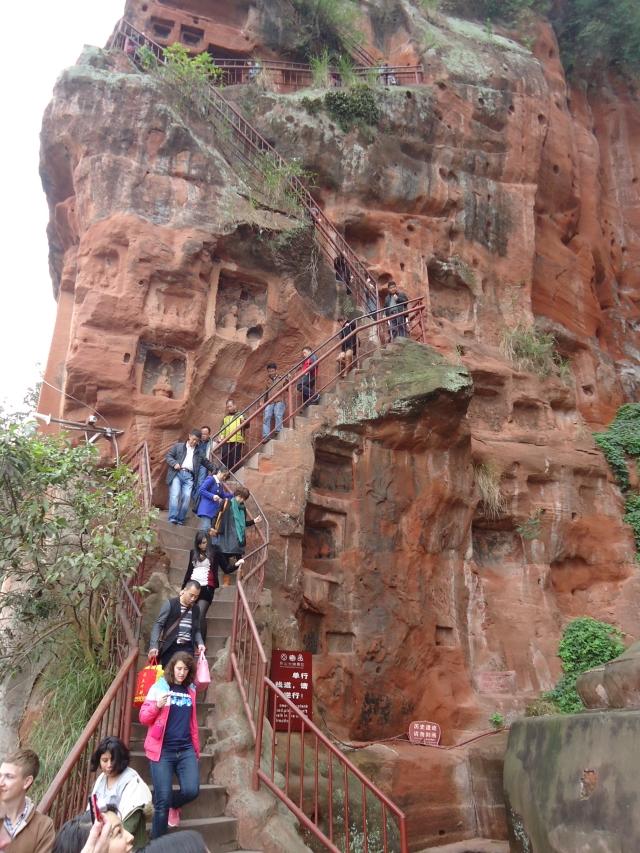
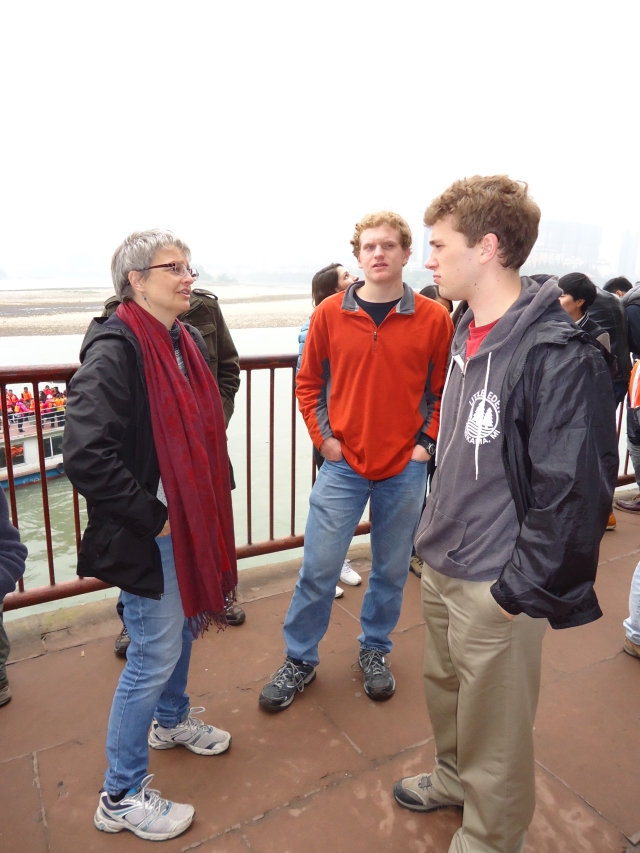
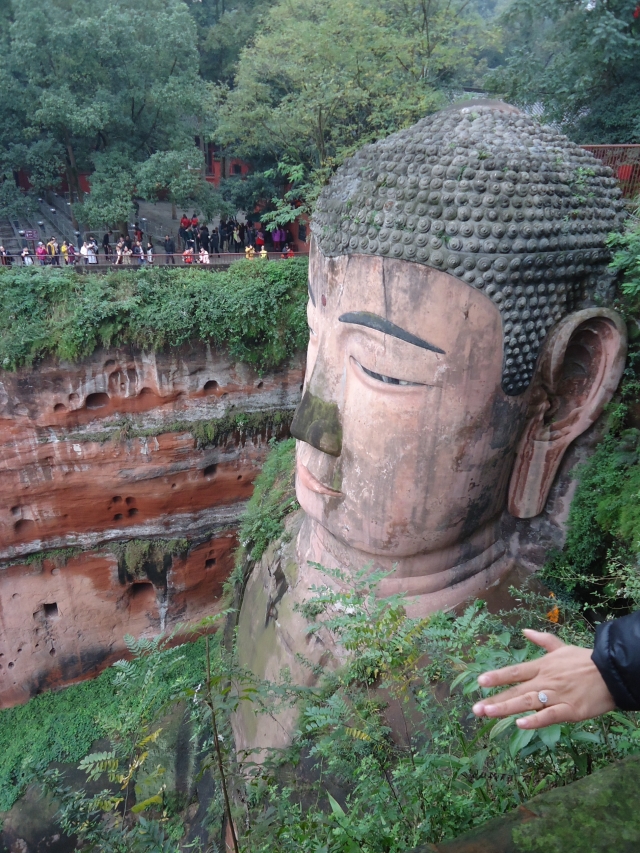
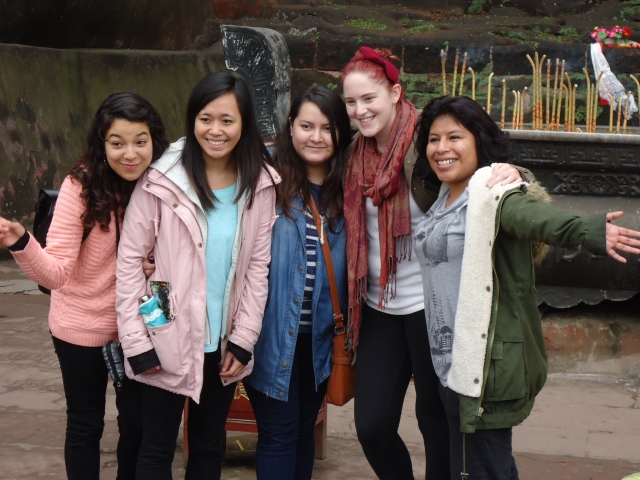
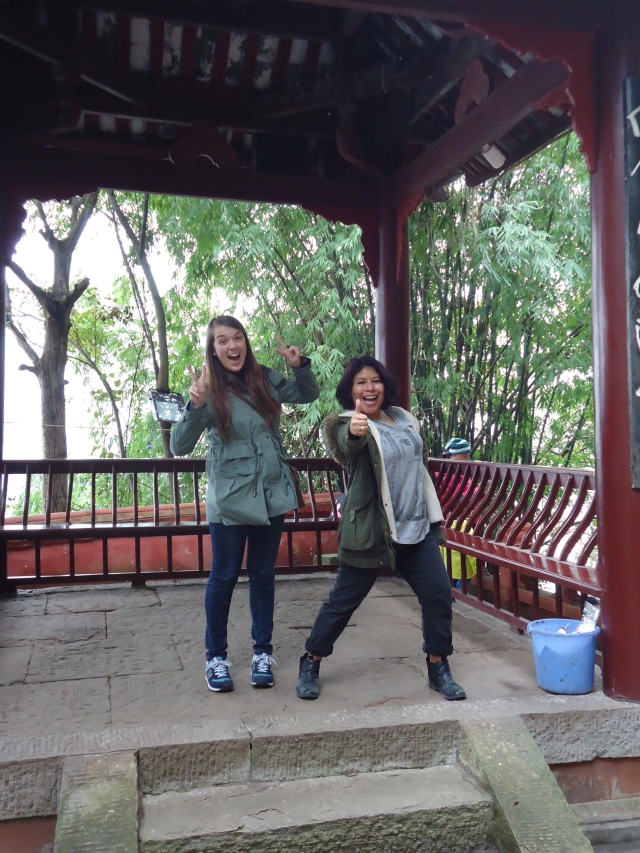
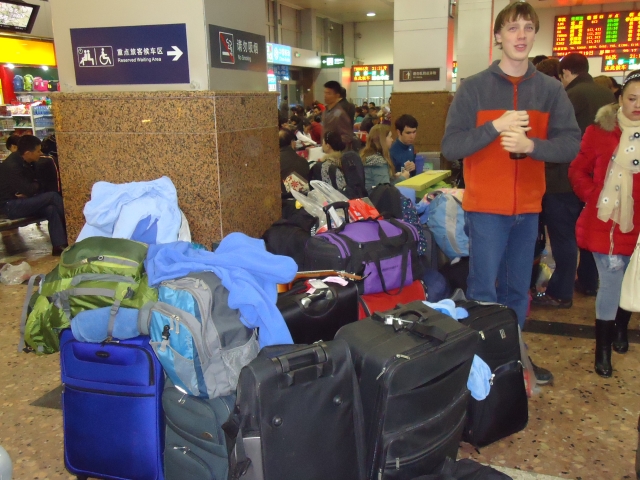
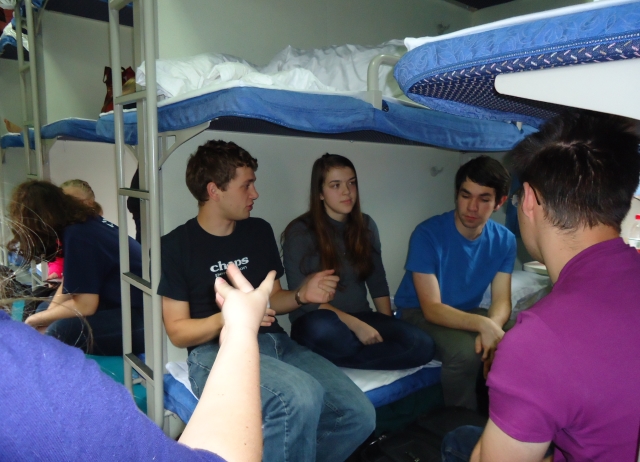
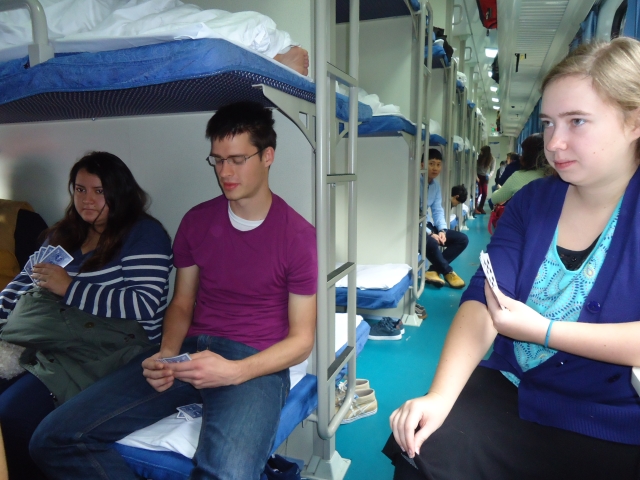
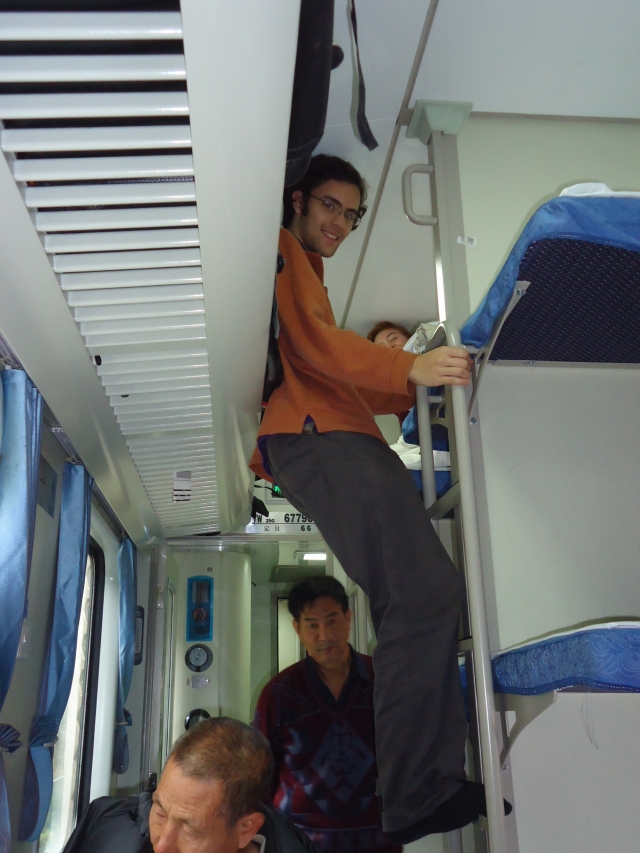
We spend the final week of China SST traveling to visit a number of key cultural sites in the country that has been our home this semester.
On Monday, November 17 we left Nanchong by bus for Chengdu. Around noon we checked into the hostel where we had spent our first two nights in China, back on August 31 and September 1. Back then, many of us were only comfortable going out on the street in groups and were hesitant when using our language to buy things or order food in a restaurant. Now, those activities seem second nature and everyone felt at ease going out in the city.
That afternoon we took public transportation to visit the Jinsha archeology site on Chengdu’s northwest side. In February 2001 construction workers digging a sewer line for a new housing complex uncovered what became one of the most remarkable discoveries in years: thousands of gold, bronze, jade, and stone artifacts and hundreds of ivory pieces and elephant tusks from a Shu city-state that flourished some 3,000 years ago and persisted until about 300 BC. Eventually eight sites were uncovered in the general area, including a palace complex, a sacrificial area, a residential zone, and burial grounds. Today the Jinsha museum includes one enclosed archeological pit that visitors can view up close and a museum displaying many of the objects uncovered thus far. Monday evening, after dinner, we were joined by Peter Yuan, dean of the Sichuan Theological Seminary, who spoke about the church in Sichuan.
On Tuesday we visited several outdoor sites west and northwest of Chengdu. First we headed to Dujiangyan, a dam-irrigation-water-management system originally designed and constructed in the 200s BC under the direction of a remarkable civil servant named Li Bing. Although the system has been upgraded over time, the basic system Li put in place is still irrigating more than 2,000 square miles of Sichuan territory and has successfully controlled flooding for centuries. The entire area is also a nature preserve with trails for hiking and several swinging bridges across the Min River. Later in the afternoon we also did some hiking on Qingcheng Mountain before returning to Chengdu. That evening, after a dinner of Yunnan Noodles, we visited Sichuan Theological Seminary. Dean Yuan and the seminary student body (77 students this year) welcomed us in the building’s chapel on the seventh floor. The seminary choir sang a Chinese hymn for us and we sang three verses of “Be Thou My Vision” for them. Then we divided into groups and talked with the seminarians for about an hour. The four-year program of study draws students from a five-province area, and including a large number who are members of China’s ethnic-minority groups. Most are age 18 to 35, with roughly even numbers of men and women. All graduates become pastors, often back in the home communities that are sponsoring them as students.
On Wednesday we headed south from Chengdu to the small riverside city of Leshan to visit the Giant Buddha of Leshan. Carved into the side of a mountain between the years 713 and 803, it is 233-feet high and one of the largest statues anywhere in the world. In comparison, the Statue of Liberty is 151 feet tall. (All statues larger than the Leshan Buddha have been created or carved since the 1960s, so it is amazing that something this enormous was created with hand tools so many centuries ago.) We hiked to the top of the statue, then climbed the stairs down to its base, and then took another staircase back up the other side.
Then we headed back to Chengdu and the city’s north train station where we boarded a 9:15 p.m. sleeper train to Xi’an.




